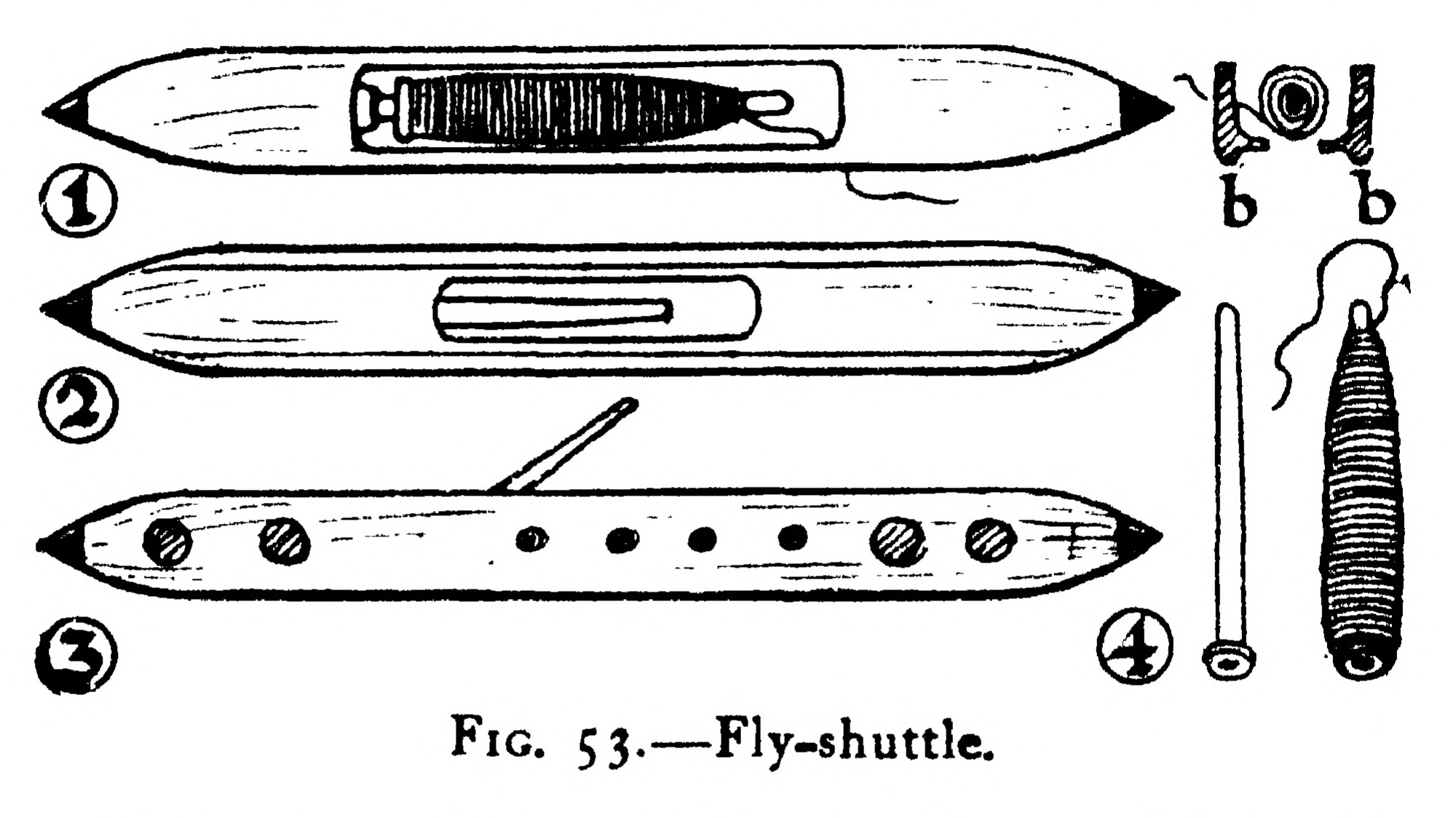Last year I converted my loom into a ‘spring-loom’ by building a new fly-shuttle mechanism. Before starting I spent some time looking at looms in museums and old photographs. I found there to be three alternative ways of making the springs, which I call the stick, the rope and the coil.
Springs or no springs
Old looms fitted with fly-shuttle mechanisms often had some kind of spring to assist in throwing and catching the shuttle – hence the term ‘spring-loom’. But not all fly-shuttle looms had springs. Both Timmy Feather’s loom in Cliffe Castle Museum, Keighley, and the cast-iron ‘dandy loom’ in Helmshore Mills Textile Museum show no signs of ever having had springs. And the illustration of a fly-shuttle in Luther Hooper’s Hand-Loom Weaving Plain & Ornamental (1910) also shows fly-shuttle mechanism without a spring (see below).
The ‘stick’ spring
Where springs are fitted, they seem to fall into one of three types. The first and simplest of these uses slender branches of willow or similarly flexible wood with one end rigidly fixed to the swords of the lay. Some adjustment can be made by varying the length of the cord to the picker, or by finding a new stick! Springs of this type are found on old Irish looms for weaving linen damask, such as those in Lisburn Museum and Ulster Folk & Transport Museum. I assume these rather gentle springs are well suited to the light shuttles used on these looms.
The ‘rope’ spring
The second type of spring, which I call the ‘rope’ type, uses a rigid stick whose upper end is caught between two twisted cords or ropes running from the front posts of the loom to the back. The woollen loom in the Ulster Folk & Transport Museum uses this kind of spring, as do some of the looms in old photographs from Newtownards, NI. This type of spring can be adjusted by adding more or less twist to the rope. These springs are potentially stronger and better suited to the heavier shuttles used for weaving wool.
The ‘coil’ spring
The third kind of spring uses a coil spring attached to a lever. This seems to me a less elegant solution, with more components, and reliant on the availability of industrially manufactured coil springs. The loom in the Gigg Mill Weaving Shed in Nailsworth, and the small sampling loom in Lisburn Museum are both fitted with this type of mechanism.
Invention of the fly-shuttle
It is generally agreed that the “flying-shuttle” was invented in 1733 by John Kay, a reed-maker from Bury in Lancashire. The term “flying-shuttle” is a bit misleading. John Kay’s patent, Number 542, descibed it as a “wheeled shuttle”, and it was only much later that it became known as the “fly-shuttle” and still later the “flying-shuttle”. The shuttle itself is only one component in an assembly of parts which propels the shuttle across the loom when the weaver pulls a cord. It enabled a single weaver to make the wider cloths that would previously have needed two weavers seated side by side, while also significantly speeding up the weaving process. There appears to be no mention of a spring of any type in Kay’s original patent.







